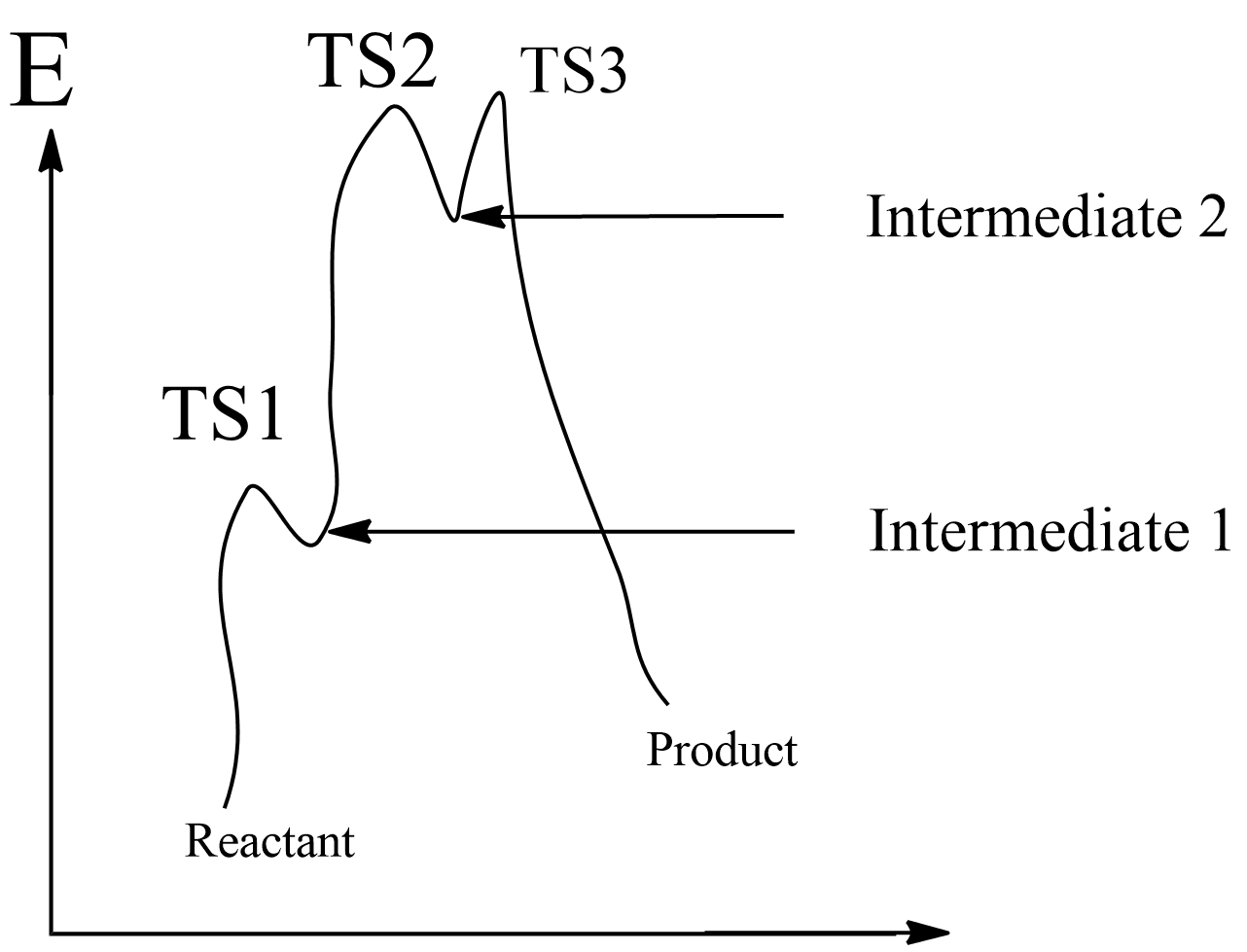

Transition state 2 (TS2) is structurally most likely as a/an:
(A) intermediate 2
(B) product
(C) intermediate 1
(D) transition state (TS3)
Answer
141k+ views
Hint: The transition state of a chemical reaction is a particular configuration along with the reaction coordinate. The transition state is unstable with a high energy state and some amount of energy approaches the next step of the reaction. whether transition state is closer to reactants exothermic reaction favours or closer to products endothermic reaction favours.
Complete step by step solution:
According to Hammond’s postulate states that the transition state of a reaction resembles either reactants or the products to whichever closer in energy.
In an exothermic reaction, the transition state is closer to reactants, then less energy required during the formation of products. Hence according to Hammond’s postulate, in an exothermic reaction, the transition state resembles reactants.
In an endothermic reaction, the transition state is closer to the products than to the reactants in energy. So, more energy is required at the formation of products. Therefore, according to Hammond’s postulate, in an endothermic reaction, the transition state resembles the products.
In the given reaction with three transition states TS1, TS2, and TS3, which exist with two intermediates as intermediate 1 and intermediate 2 based on their energy level. Generally, the transition state tries to bring stability with less energy difference.
Hence, according to Hammond’s postulate, the transition state resembles that species which is energetically near to it, hence, transition state 2 will resemble intermediate 2.
Therefore, the correct answer is option A: intermediate 2.
Note: Activation energy and transition state are different in kinetic reactions. Activation energy means the energy required for a reaction to occur catalysis by increasing the rate of reaction by lowering its activation energy. The transition state is an intermediate state during a chemical reaction that has higher energy than the reactants or the products.
Complete step by step solution:
According to Hammond’s postulate states that the transition state of a reaction resembles either reactants or the products to whichever closer in energy.
In an exothermic reaction, the transition state is closer to reactants, then less energy required during the formation of products. Hence according to Hammond’s postulate, in an exothermic reaction, the transition state resembles reactants.
In an endothermic reaction, the transition state is closer to the products than to the reactants in energy. So, more energy is required at the formation of products. Therefore, according to Hammond’s postulate, in an endothermic reaction, the transition state resembles the products.
In the given reaction with three transition states TS1, TS2, and TS3, which exist with two intermediates as intermediate 1 and intermediate 2 based on their energy level. Generally, the transition state tries to bring stability with less energy difference.
Hence, according to Hammond’s postulate, the transition state resembles that species which is energetically near to it, hence, transition state 2 will resemble intermediate 2.
Therefore, the correct answer is option A: intermediate 2.
Note: Activation energy and transition state are different in kinetic reactions. Activation energy means the energy required for a reaction to occur catalysis by increasing the rate of reaction by lowering its activation energy. The transition state is an intermediate state during a chemical reaction that has higher energy than the reactants or the products.
Latest Vedantu courses for you
Grade 10 | MAHARASHTRABOARD | SCHOOL | English
Vedantu 10 Maharashtra Pro Lite (2025-26)
School Full course for MAHARASHTRABOARD students
₹33,300 per year
EMI starts from ₹2,775 per month
Recently Updated Pages
Difference Between Crystalline and Amorphous Solid

JEE Main Participating Colleges 2024 - A Complete List of Top Colleges

JEE Main Maths Paper Pattern 2025 – Marking, Sections & Tips

Sign up for JEE Main 2025 Live Classes - Vedantu

JEE Main 2025 Helpline Numbers - Center Contact, Phone Number, Address

JEE Main Course 2025 - Important Updates and Details

Trending doubts
JEE Main 2025 Session 2: Application Form (Out), Exam Dates (Released), Eligibility, & More

JEE Main Exam Marking Scheme: Detailed Breakdown of Marks and Negative Marking

JEE Main 2025: Derivation of Equation of Trajectory in Physics

Electric Field Due to Uniformly Charged Ring for JEE Main 2025 - Formula and Derivation

Types of Solutions

Learn About Angle Of Deviation In Prism: JEE Main Physics 2025

Other Pages
NCERT Solutions for Class 11 Chemistry Chapter 9 Hydrocarbons

JEE Advanced Marks vs Ranks 2025: Understanding Category-wise Qualifying Marks and Previous Year Cut-offs

NCERT Solutions for Class 11 Chemistry Chapter 5 Thermodynamics

Hydrocarbons Class 11 Notes: CBSE Chemistry Chapter 9

NCERT Solutions for Class 11 Chemistry In Hindi Chapter 1 Some Basic Concepts of Chemistry

Thermodynamics Class 11 Notes: CBSE Chapter 5




